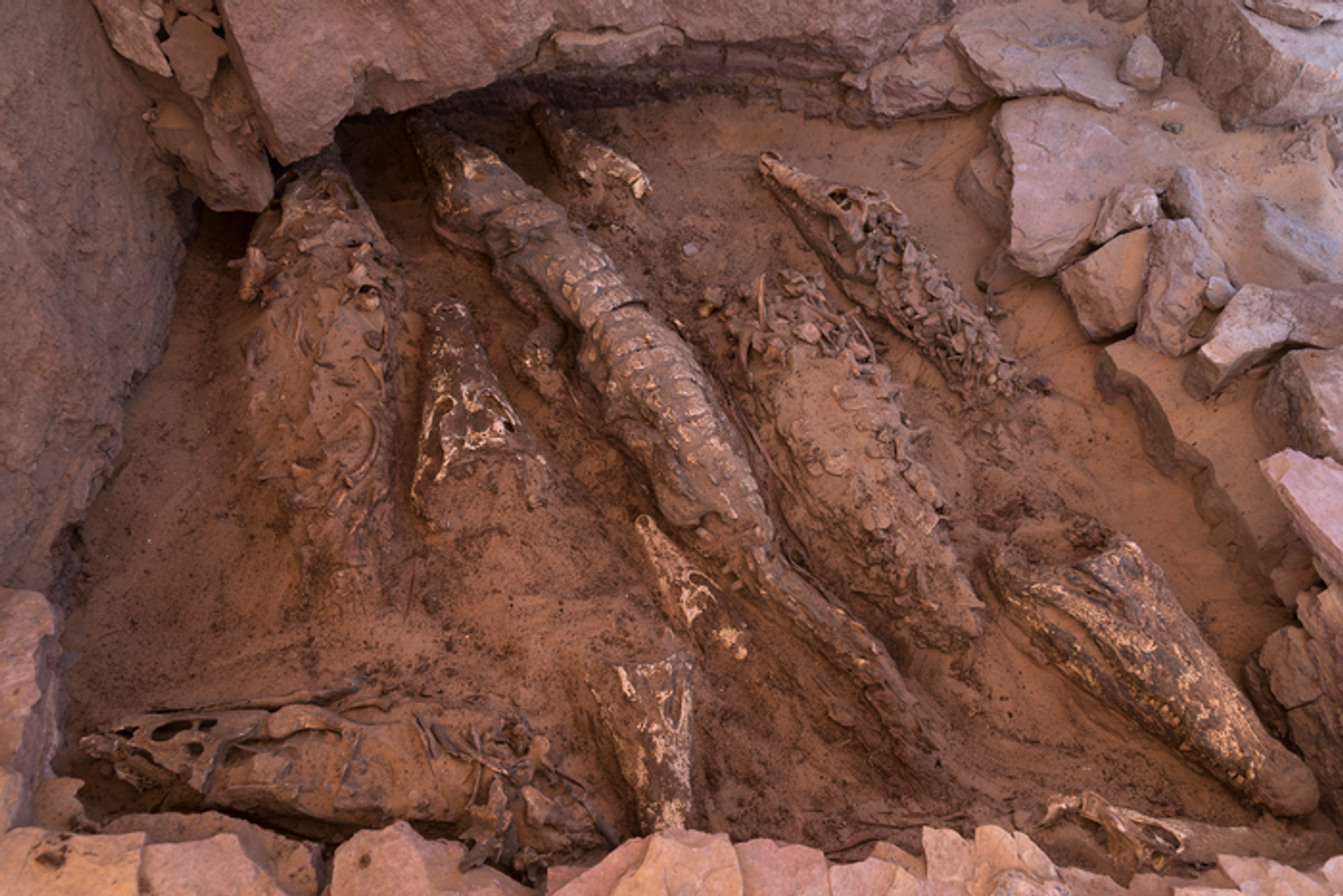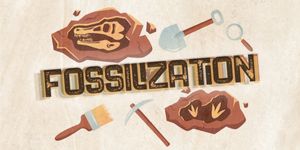In a While Crocodile: An Amazing Cache of Mummified Crocodiles Discovered in Egypt
Mummified animals of many kinds were common in Ancient Egypt, from more common animals like cats, birds, and dogs to more unique animals like primates, lions, and in this case, crocodiles. Over the past few decades, the rationale behind the mummification of animals has been broken down into 6 primary categories:
- Pets – animals mummified to accompany their owners in death
- Food source – animals buried with a person/people to serve as a food source in the afterlife
- Sacred Animals – animals that were worshipped while alive
- Votive Offerings – animals that depicted/were associated with gods (placed in burials or in temples as offerings)
- False or amalgam animal mummies – these contain no actual animal remains, but were made to look like them
- Other (not everyone can fall into a perfect category!)
In 2019, during the excavation of a previously undisturbed tomb at Qubbat al-Hawā (Aswan, Egypt), an interesting discovery was made – the mummified remains of 10 crocodiles in varying states of preservation. Five are represented only by their skulls, four fairly complete skeletons, and one well-preserved mummified animal.
Based on their position within the tomb, these crocodiles all date from sometime between the New Kingdom and the Byzantine period, which is a long potential time span. However, due to the nature of burials in the area, and evidence from the tomb itself, the team that made the discovery estimates the date to be closer to the 5th century BC.
While other crocodile mummies have been found across Egypt, these 10 are unique in that they weren’t prepared in the usual way. Previously examined crocodile mummies had their organs removed (completely or partially), and had textiles, resin, or bitumen inserted into their body cavities to enhance preservation over time. In this case, none of the crocodiles from Qubbat al-Hawā show evidence for the application of resin or bitumen, nor is there evidence for evisceration (although only one crocodile was preserved enough to examine the soft tissues). Additionally, there was no evidence of how the animals were killed, although preservation may play a role in being unable to determine that.
For now, we still don’t know which category these crocodiles fall into in terms of purpose. What we do know is that they provide yet more evidence for archaeologists in understanding Ancient Egyptian beliefs and practices.
You can read the full article open access:
Newly discovered crocodile mummies of variable quality from an undisturbed tomb at Qubbat al-Hawā (Aswan, Egypt) by Bea De Cupere, Wim Van Neer, Vincente Barba Colmenero, Alejandro Jiménez Serrano
Additional Sources:
National Geographic, Scientific American, Scientific Reports, Smithsonian Magazine, Britannica, EurekAlert!
Cover Image Credit: Patri Mora Riudavets, member of the Qubbat al-Hawā team, CC-BY 4.0 (https://creativecommons.org/licenses/by/4.0/)










